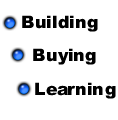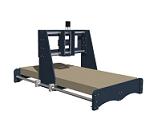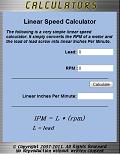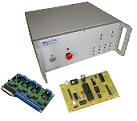Stepper Motor Control:
Motor Drivers
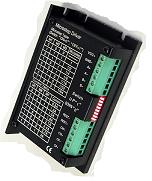
Precise stepper motor control is achieved with stepper motor drivers. Stepper motor drivers receive a
control signal
from the NC computer and energize the stepper motor coils that cause the motor to move. A stepper motor driver needs at least five connections in order to operate:
1. A step direction, known as the direction signal
2. The number of steps to take, known as the step signal
3. A Common Ground between the NC controller and driver
4. Positive power from the power source
5. ground from the power source
The stepper motor drivers interprets the step and direction signals given from the NC computer and energizes the desired coils to make the motor spin in the appropriate direction the correct number of steps. See the figure below.

The purpose of any stepper driver is to provide power each coil in most efficient manner possible. There are three ways that these drivers supply the power to the motors. Remember, current applied to the motor coils/windings gives the motor its torque.
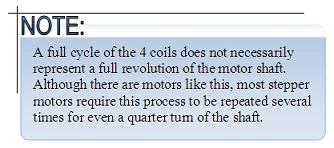
Stepper Motor Control: Driver TypesL/R DriversL/R Drivers also known as constant-voltage drivers supply a constant voltage to alternating coils to achieve the stepping action. The current in each coil is a relation of the motors inductance (L) and resistance (R), hence the term L/R. Because of this fact, this type of driver is not very efficient and is hardly used. Full torque is only achieved at low speeds. Bi-level DriversBi-level drivers use a very different method of stepper motor control. The bi-level driver uses a high voltage source to rapidly increase the amperage (current) rise time in the motor coils. Then the high voltage is cut while a low voltage source sustains the current level. This is where the term Bi-level comes from the low and high level voltage sources. This type of driver is very efficient and is often found in high end machines. The bi-level also offer less motor heating and RFI problems but can not micro step. Only half step and full step modes are supported. Chopper (PWM) DriversThe chopper or PWM driver is the most popular stepper motor driver. Most all of the stepper motor drivers that are for sale are of this type now days. This type of driver is also known as a constant-current driver because it supplies a constant current to the coils. A very high voltage is applied to each coil and then chopped when the desired current is reached. These drivers only require a single power source. The current rating to each coil/winding on these types of drivers is usually adjustable by changing a resistor or by an installed potentiometer. These drivers have the ability to micro step which offers greater resolution and smoother operation. Not all chopper drivers are equal. The chopping or PWM frequency is different per manufacturer. A frequency of 20 kHz or above is best, the higher the better. Lower frequencies cause an audible humming noise from the motors and poor motor performance. There also two different classes of Chopper/PWM stepper motor drivers, uni-polar and bi-polar.The next section covers the difference between uni-polar and bipolar drivers and also covers the different modes of operation for stepper drivers.
Continue to Stepper motor control: Uni-polar, Bipolar, and Step Modes
Back to CNC Controllers
Home
|
